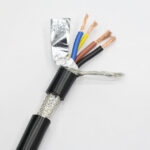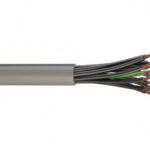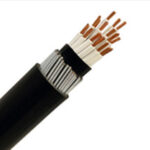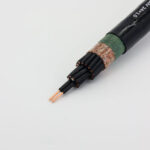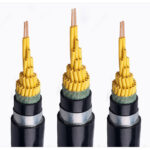Choosing the correct wire gauge for a 20 amp circuit is essential for electrical safety and code compliance. Using the wrong wire size can lead to overheating, fire hazards, and electrical system failures. This comprehensive guide explains everything you need to know about 20 amp wire sizing.

what gauge wire for 20 amp
Quick Answer: 12 AWG Wire for 20 Amp Circuits
For standard 20 amp electrical circuits, you need:
- 12 AWG copper wire (most common and recommended)
- 10 AWG aluminum wire (rarely used for residential branch circuits)
This is the minimum required size under the National Electrical Code (NEC) and ensures safe operation under normal conditions.
Understanding Wire Gauge and Ampacity
Wire gauge, measured in AWG (American Wire Gauge), determines how much electrical current a wire can safely carry. The relationship is inverse – smaller numbers mean thicker wires that can handle more current.
Common Residential Wire Sizes:
- 14 AWG: Maximum 15 amps
- 12 AWG: Maximum 20 amps
- 10 AWG: Maximum 30 amps
- 8 AWG: Maximum 40 amps
The ampacity rating represents the maximum continuous current a wire can carry without exceeding safe temperature limits.
Why 12 AWG Wire is Required for 20 Amp Circuits
The NEC requires that wire ampacity must equal or exceed the circuit breaker rating. Since 12 AWG copper wire has an ampacity of 20 amps under standard conditions, it's the minimum size allowed for 20 amp circuits.
Critical Safety Rule: Never use 14 AWG wire (rated for 15 amps) on a 20 amp breaker. This creates a dangerous situation where the wire can overheat before the breaker trips.
Common Applications for 20 Amp Circuits
Kitchen and Dining Areas
- Countertop receptacle outlets (required by code)
- Small appliance circuits
- Microwave outlets
- Garbage disposal circuits
Bathrooms
- Bathroom receptacle outlets
- Hair dryer and styling tool outlets
- Electric towel warmers
Laundry Areas
- Washing machine outlets
- Utility room receptacles
- Laundry sink areas
Garages and Workshops
- Garage door opener circuits
- Workshop tool outlets
- Electric vehicle charging (Level 1)
- Outdoor receptacles
Other Applications
- Dedicated appliance circuits
- Some lighting circuits with high loads
- Home office equipment circuits
Types of 12 AWG Wire for 20 Amp Circuits
Romex/NM Cable (Non-Metallic)
- 12-2 NM: Two conductors plus ground (hot, neutral, ground)
- 12-3 NM: Three conductors plus ground (for three-way switches or 240V)
- Most common for residential wiring
- Easy to install in wood frame construction
THWN Wire in Conduit
- Individual 12 AWG conductors
- Used in metal or PVC conduit systems
- Required in some commercial applications
- Better protection from physical damage
MC Cable (Metal-Clad)
- 12 AWG conductors in flexible metal sheathing
- Combines protection of conduit with flexibility of cable
- Often required in commercial buildings
- Good for exposed installations
Factors That May Require Larger Wire
Long Wire Runs
Distance affects voltage drop, which may require upsizing:
- Up to 100 feet: 12 AWG typically adequate
- 100-150 feet: Consider 10 AWG to minimize voltage drop
- Over 150 feet: Voltage drop calculations essential
High Ambient Temperatures
Wire ampacity decreases in hot environments:
- Attics in summer: May require derating
- Hot climates: Consider temperature correction factors
- Bundled cables: Heat buildup may require larger wire
Continuous Loads
For loads running more than 3 hours continuously:
- Wire and breaker must be sized at 125% of load
- May require upsizing to 10 AWG for some applications
- Examples: electric baseboard heaters, some lighting
Installation Methods and Wire Selection
Running Through Walls
- Use 12-2 or 12-3 Romex cable
- Drill holes through center of studs
- Protect cables with nail plates where necessary
- Leave 6+ inches of wire at boxes
Conduit Systems
- Pull individual THWN conductors
- Use proper conduit fill calculations
- Include separate equipment grounding conductor
- Follow bending radius requirements
Surface-Mounted Installation
- MC cable or conduit systems
- Proper support every 4-6 feet
- Protection from physical damage
- Professional appearance considerations
Code Requirements and Safety Standards
National Electrical Code (NEC) Requirements
- Minimum 12 AWG for 20 amp circuits
- Proper grounding and bonding
- GFCI protection where required
- Adequate box fill calculations
Local Code Variations
- Some areas have stricter requirements
- Permit and inspection requirements
- Specific installation methods
- Professional licensing requirements
GFCI Protection Requirements
20 amp circuits require GFCI protection in:
- Bathrooms and powder rooms
- Kitchens (countertop outlets)
- Garages and accessory buildings
- Outdoors and wet locations
- Crawl spaces and unfinished basements
Common Wiring Mistakes to Avoid
Using Wrong Wire Size
- Never use 14 AWG on 20 amp breakers
- Don't assume existing wire is correct size
- Check wire markings before connecting
Improper Connections
- Use wire nuts rated for wire size
- Make proper mechanical connections
- Ensure all connections are tight
- Don't mix aluminum and copper without proper connectors
Overloading Circuits
- Calculate total load before adding outlets
- Consider future electrical needs
- Don't daisy-chain too many outlets
- Use dedicated circuits for high-draw appliances
Planning Your 20 Amp Circuit Installation
Load Calculation
- Identify connected devices: List all equipment on circuit
- Calculate amperage: Add up all electrical loads
- Apply safety factor: Keep total under 16 amps (80% of capacity)
- Consider future needs: Plan for additional outlets or equipment
Circuit Layout Design
- Minimize wire runs: Shorter distances save money and reduce voltage drop
- Logical grouping: Group related outlets together
- Access considerations: Plan for future maintenance and modifications
- Code compliance: Ensure adequate outlet spacing and GFCI protection
Cost Considerations
Wire Costs
- 12 AWG Romex: $0.50-$1.00 per foot
- THWN in conduit: $0.30-$0.60 per foot plus conduit costs
- MC cable: $1.00-$2.00 per foot
- Copper prices fluctuate with market conditions
Installation Costs
- DIY installation: Wire and materials only
- Professional installation: $150-$300 per outlet typically
- Permit fees: $50-$200 depending on location
- Inspection costs: Usually included with permit
When to Call a Professional
Contact a licensed electrician for:
- Panel modifications: Adding new breakers
- Complex routing: Through finished walls or tight spaces
- Code questions: Uncertain about requirements
- Permit applications: Professional licensing may be required
- Safety concerns: Any doubt about proper installation
Maintenance and Safety Tips
Regular Inspections
- Check outlets for loose connections
- Look for signs of overheating (discoloration, burning smells)
- Test GFCI outlets monthly
- Ensure circuit breakers operate properly
Safe Usage Practices
- Don't exceed circuit capacity
- Use appropriate extension cords temporarily only
- Keep electrical connections dry
- Replace damaged outlets or switches promptly
Troubleshooting Common Issues
Circuit Breaker Trips Frequently
- Overloaded circuit: Too many devices connected
- Short circuit: Wiring fault requiring immediate attention
- Ground fault: GFCI protection working properly
- Loose connections: Can cause arcing and heat
Outlets Not Working
- Tripped breaker: Check electrical panel
- GFCI tripped: Reset GFCI outlets upstream
- Loose connections: May require professional repair
- Wire damage: Could indicate more serious problem
Future-Proofing Your Electrical System
Planning for Technology Changes
- Consider USB outlets for device charging
- Plan for electric vehicle charging needs
- Smart home device power requirements
- Home office equipment expansion
Upgrading Considerations
- Adding circuits vs. upgrading existing
- Panel capacity for additional circuits
- Whole-house electrical needs assessment
- Energy efficiency improvements
Conclusion
Using 12 AWG wire for 20 amp circuits is not just a code requirement – it's essential for electrical safety in your home. Proper wire sizing prevents overheating, reduces fire risk, and ensures reliable electrical service for years to come.
While the wire gauge requirement is straightforward, proper installation requires attention to detail and code compliance. When in doubt, consult with a licensed electrician to ensure your electrical work is safe, legal, and properly installed.
Remember that electrical work can be dangerous and may require permits and professional installation in many jurisdictions. Always prioritize safety over cost savings when working with electrical systems.
Frequently Asked Questions
Q: Can I use 10 AWG wire on a 20 amp circuit? A: Yes, 10 AWG wire can be used on 20 amp circuits. It's oversized but perfectly safe and may be required for long runs or high-temperature conditions.
Q: What happens if I use 14 AWG wire on a 20 amp breaker? A: This creates a dangerous fire hazard. The wire can overheat and potentially cause a fire before the 20 amp breaker trips.
Q: How many outlets can I put on a 20 amp circuit? A: The NEC doesn't specify a maximum number, but practical considerations suggest 8-10 outlets maximum, depending on expected loads.
Q: Do I need GFCI protection on all 20 amp circuits? A: GFCI protection is required in specific locations like bathrooms, kitchens, garages, and outdoor areas, regardless of amperage.
Q: Can I mix 15 amp and 20 amp outlets on the same circuit? A: Yes, you can use 15 amp outlets on 20 amp circuits, but not vice versa. The wire gauge must still be 12 AWG for the 20 amp circuit.

